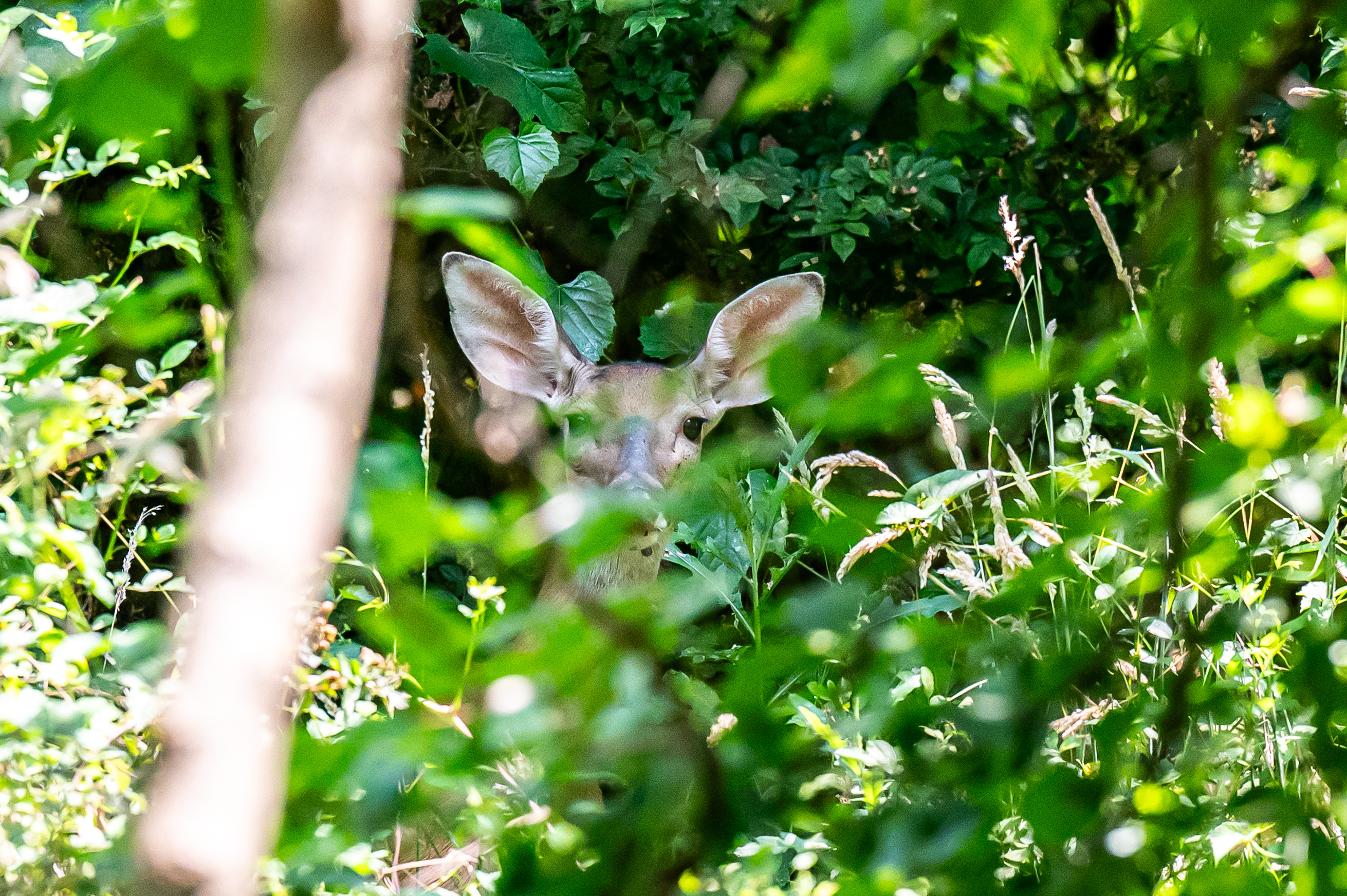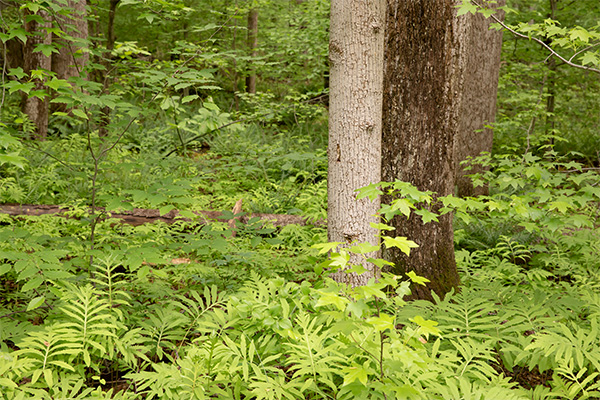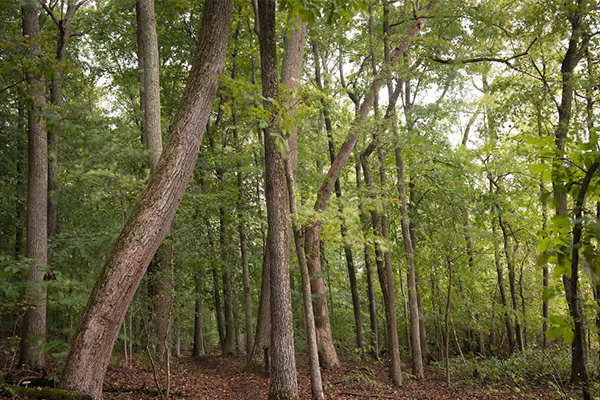Deer Management
Discover the reasons for deer management, learn about the components of the deer management program, and find resources to help alleviate deer conflicts on your property.
Background
White-tailed deer (Odocoileus virginianus) are a beautiful and valuable wildlife species in Prince George’s County. Though once rare in Maryland, the current deer population has become over-abundant. Too many deer will result in ecological problems and increase deer-human conflicts.
Population Growth
The factors that have contributed to the population growth of deer in our region include:
- Abundant food sources found in agriculture and residential landscaping
- Ideal deer habitat found in suburban areas
- Removal of large predators
- Reduced hunting opportunities
The Need for Deer Management
A reduction in population using deer management is needed to address the issues caused by too many deer. Over-abundant deer populations can result in:
- Forest degradation due to heavy browsing of tree seedlings
- Reduced biodiversity
- Increase in invasive plant species
- Increased risk of deer-vehicle collisions
- Potential increased risk of Lyme Disease and other communicable diseases
- Property damage to landscaping, crops, and vehicles
- Poor herd health
Deer Management Programs
The Department is managing select parks to lower the deer population at those sites through public hunting and sharpshooting. Though many parks are experiencing the negative effects of an over-abundant deer population, the Department’s management program is not always a feasible option. Safety is the program’s top priority.
Deer Management Factors
When determining if deer management is feasible at a park, the Department considers the following:
- Access throughout the park
- Deer population size
- Deer-vehicle collision data
- Ecological damage
- Number of surrounding homes and businesses
- Public comments
- Size of the park
Deer Population Surveys
The deer management program conducts population surveys to estimate the deer population size at select park sites. The recommended deer density is 20 deer per square mile. Park properties that are estimated to have significantly higher deer densities than what is recommended are considered for deer management.
Deer-Vehicle Collisions
In partnership with Prince George’s County Animal Control, deer-vehicle collision data has been gathered to show where roadkill deer carcasses are removed from county roads. This deer vehicle collision map (PDF) shows those locations. Please note this data does not include unreported carcasses or deer that survive a vehicle collision. The true number of deer-vehicle collisions is believed to be much higher.
Driving Tips
Here are some driving tips to help prevent striking a deer with your vehicle:
- Drive the speed limit. Slower driving speeds give you and the deer more time to react.
- Deer are more active from dusk to dawn. Be cautious when driving during these times.
- The fall breeding season (October – December) has the highest occurrence of deer-vehicle collisions because of increased deer activity.
- Look for the eye shine of deer when driving at night.
- Pay attention to stretches of roads with deer crossing signs.
- Deer tend to travel in groups. If one deer is observed crossing the road, drive slowly and look for more deer.
Resources
Property owners are able to use various tools to address deer-related conflicts. The following tools can be used to help alleviate issues:
- Deer-resistant Landscaping
- Deterrents
- Fencing
- Hunting (check county and state regulations)
- Repellents
Department of Natural Resources
Contact Us
For questions, please email Deer Management or call 301-627-7755.
Recreational hunting for white-tailed deer is permitted at select parks in partnership with the Maryland Department of Natural Resources. Deer hunting is allowed during the regulated state deer hunting seasons only. M-NCPPC hunting areas are designated as Cooperative Wildlife Management Areas. On top of state regulations, specific rules and regulations are in effect.
- A valid Maryland hunting license and public land hunting permit are required.
- Call DNR Myrtle Grove Office 301-743-5161 to make daily reservations.
- Parking permit included with the “free public land hunting permit” must be displayed on the hunter vehicle dash at all times while hunting at M-NCPPC parks.
- Some sites are gated. Code to access gates will be given when you make your reservation.
- M-NCPPC allows hunter access at Aquasco/Gardner/Queen Anne/Marlboro from 1.5 hours before sunrise and 1.5 hours after sunset, Monday through Saturday. Billingsley CWMA is open Monday through Friday, 9 am until 1.5 hours after sunset.
Public Hunting Parks
The following parks are open to the public hunting for deer
Visit the Maryland DNR Southern Region Public Hunting Lands web page for information on public hunting opportunities in southern Maryland, requirements to obtain the “free public land hunting permit,” and information on how to get a reservation to hunt at M-NCPPC parks.
Contact Us
For more information, please email Deermanagement@pgparks.com or call the Park Ranger Office at 301-627-7755.
View more information about Deer Management. Discover the reasons for deer management, learn about the components of the deer management program, and find resources to help alleviate deer conflicts on your property.
Specially trained Park Police officers conduct sharpshooting activities at select parks to reduce deer populations and alleviate issues caused by high deer densities. Parks selected for deer sharpshooting operations are not feasible for regulated public hunting. Sharpshooting activities take place from February 1-March 31. The sharpshooting program is designed with public safety as the top priority. Operations will take place from sunset to sunrise when parks are generally closed to the public.
Program Rules
The sharpshooting program is directed and supervised by the Department’s Park Ranger Unit and Park Police Division. Officers participating in this program have received extensive specialized weapons training.
- Weapons are discharged only when a safe foreground and background to the target exists.
- Deer are removed safely, discreetly, and humanely.
- All deer harvested through this program are donated to local food banks to feed families in need.
Sharpshooting Locations
Sharpshooting activities will take place at:
- Compton-Bassett Farm, Upper Marlboro
- Dyson Farm Complex, Brandywine
- Enterprise Golf Course, Mitchellville
- Governor’s Bridge Natural Area/Greenbranch Property, Bowie
- Henson Creek Stream Valley Park, Fort Washington
- Oxon Hill Manor, Oxon Hill
- Patuxent River Park, Upper Marlboro
- Randall Farm Maintenance Facility, Upper Marlboro
- Watkins Regional Park, Upper Marlboro
Parks, where sharpshooting operations are implemented, are closed to the public between sunset and sunrise. Some parks will have facilities that are still open to the public after sunset. Park Police will be on-site at these locations.
Additional Information
For questions or more information, please contact the Park Ranger Office at 301-627-7755 or email us at DeerManagement@pgparks.com. Public comments about the program, and existing and new sites can be sent via email.




